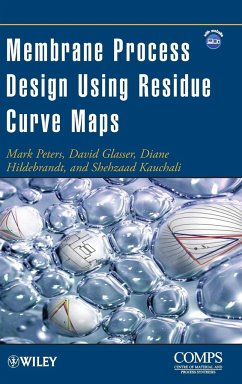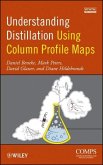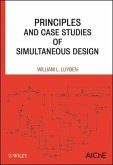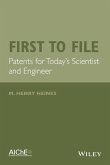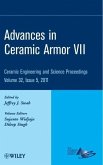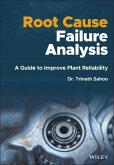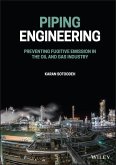Mark Peters, David Glasser, Diane Hildebrandt, Shehzaad Kauchali
Membrane Process Design Using Residue Curve Maps
Mark Peters, David Glasser, Diane Hildebrandt, Shehzaad Kauchali
Membrane Process Design Using Residue Curve Maps
- Gebundenes Buch
- Merkliste
- Auf die Merkliste
- Bewerten Bewerten
- Teilen
- Produkt teilen
- Produkterinnerung
- Produkterinnerung
Design and Synthesis of Membrane Separation Processes provides a novel method of design and synthesis for membrane separation. While the main focus of the book is given to gas separation and pervaporation membranes, the theory has been developed in such a way that it is general and valid for any type of membrane.
The method, which uses a graphical technique, allows one to calculate and visualize the change in composition of the retentate (non-permeate) phase. This graphical approach is based on Membrane Residue Curve Maps. One of the strengths of this approach is that it is exactly…mehr
Andere Kunden interessierten sich auch für
![Understanding Distillation Using Column Profile Maps Understanding Distillation Using Column Profile Maps]() Daniel BenekeUnderstanding Distillation Using Column Profile Maps169,99 €
Daniel BenekeUnderstanding Distillation Using Column Profile Maps169,99 €![Principles and Case Studies of Simultaneous Design Principles and Case Studies of Simultaneous Design]() William L. LuybenPrinciples and Case Studies of Simultaneous Design175,99 €
William L. LuybenPrinciples and Case Studies of Simultaneous Design175,99 €![Problem Solving for Process Operators and Specialists Problem Solving for Process Operators and Specialists]() J. M. BonemProblem Solving for Process Operators and Specialists101,99 €
J. M. BonemProblem Solving for Process Operators and Specialists101,99 €![First to File First to File]() M. Henry HeinesFirst to File96,99 €
M. Henry HeinesFirst to File96,99 €![Advances in Ceramic Armor VII, Volume 32, Issue 5 Advances in Ceramic Armor VII, Volume 32, Issue 5]() Advances in Ceramic Armor VII, Volume 32, Issue 593,99 €
Advances in Ceramic Armor VII, Volume 32, Issue 593,99 €![Root Cause Failure Analysis Root Cause Failure Analysis]() Trinath SahooRoot Cause Failure Analysis146,99 €
Trinath SahooRoot Cause Failure Analysis146,99 €![Piping Engineering Piping Engineering]() Karan SotoodehPiping Engineering171,99 €
Karan SotoodehPiping Engineering171,99 €-
-
-
Design and Synthesis of Membrane Separation Processes provides a novel method of design and synthesis for membrane separation. While the main focus of the book is given to gas separation and pervaporation membranes, the theory has been developed in such a way that it is general and valid for any type of membrane.
The method, which uses a graphical technique, allows one to calculate and visualize the change in composition of the retentate (non-permeate) phase. This graphical approach is based on Membrane Residue Curve Maps. One of the strengths of this approach is that it is exactly analogous to the method of Residue Curve Maps that has proved so successful in distillation system synthesis and design.
The method, which uses a graphical technique, allows one to calculate and visualize the change in composition of the retentate (non-permeate) phase. This graphical approach is based on Membrane Residue Curve Maps. One of the strengths of this approach is that it is exactly analogous to the method of Residue Curve Maps that has proved so successful in distillation system synthesis and design.
Produktdetails
- Produktdetails
- Verlag: Wiley & Sons
- 1. Auflage
- Seitenzahl: 264
- Erscheinungstermin: 24. Mai 2011
- Englisch
- Abmessung: 240mm x 161mm x 19mm
- Gewicht: 563g
- ISBN-13: 9780470524312
- ISBN-10: 0470524316
- Artikelnr.: 30977294
- Herstellerkennzeichnung
- Libri GmbH
- Europaallee 1
- 36244 Bad Hersfeld
- gpsr@libri.de
- Verlag: Wiley & Sons
- 1. Auflage
- Seitenzahl: 264
- Erscheinungstermin: 24. Mai 2011
- Englisch
- Abmessung: 240mm x 161mm x 19mm
- Gewicht: 563g
- ISBN-13: 9780470524312
- ISBN-10: 0470524316
- Artikelnr.: 30977294
- Herstellerkennzeichnung
- Libri GmbH
- Europaallee 1
- 36244 Bad Hersfeld
- gpsr@libri.de
MARK PETERS graduated with both undergraduate and PhD degrees in chemical engineering from the University of the Witwatersrand in Johannesburg, South Africa. He has previously worked at Sasol Technology, where he focused on low-temperature Fischer-Tropsch gas-to-liquids conversion. He is currently a separations consultant at the Centre of Material and Process Synthesis (COMPS), based at the University of the Witwatersrand. DAVID GLASSER is a Personal Professor of Chemical Engineering and Director of the Centre of Material and Process Synthesis (COMPS) at the University of the Witwatersrand. He has been awarded an A1 rating as a scientist by the National Research Foundation, the central research-funding organization in South Africa, and has authored or coauthored more than a hundred scientific papers. DIANE HILDEBRANDT is the Co-Director for the Centre of Material and Process Synthesis (COMPS) at the University of the Witwatersrand. She has authored or coauthored over seventy scientific papers. She received the Presidents' Award from the Foundation for Research and Development as well as the Distinguished Researcher Award from the University of the Witwatersrand. SHEHZAAD KAUCHALI obtained his PhD at the School of Chemical and Metallurgical Engineering at the University of the Witwatersrand. He is currently a full-time senior academic and the Director of the Gasification Technology and Research Group.
Preface xi Acknowledgments xiii Notation xv About The Authors xix 1 INTRODUCTION 1 2 PERMEATION MODELING 7 2.1 Diffusion Membranes 8 2.1.1 Gas Separation 8 2.1.2 Pervaporation 11 2.2 Membrane Classification 13 3 INTRODUCTION TO GRAPHICAL TECHNIQUES IN MEMBRANE SEPARATIONS 15 3.1 A Thought Experiment 15 3.2 Binary Separations 16 3.3 Multicomponent Systems 20 3.3.1 Mass Balances 21 3.3.2 Plotting a Residue Curve Map 23 4 PROPERTIES OF MEMBRANE RESIDUE CURVE MAPS 29 4.1 Stationary Points 29 4.2 Membrane Vector Field 30 4.3 Unidistribution Lines 31 4.4 The Effect of a-Values on the Topology of M-RCMs 32 4.5 Properties of an Existing Selective M-RCM 34 4.5.1 Case 1: When the Permeate Side Is at Vacuum Conditions (i.e.,
P
0) 34 4.5.2 Case 2: When the Permeate Pressure Is Nonzero (i.e.,
P > 0) 36 4.6 Conclusion 38 5 APPLICATION OF MEMBRANE RESIDUE CURVE MAPS TO BATCH AND CONTINUOUS PROCESSES 41 5.1 Introduction 41 5.2 Review of Previous Chapters 44 5.3 Batch Membrane Operation 45 5.3.1 Operating Leaves in Batch Permeation 45 5.3.2 Material Balances 46 5.3.3 Permeation Model 48 5.3.4 Operating Regions: Nonselective Membranes 48 5.3.5 Operating Regions: Selective Membranes 50 5.4 Permeation Time 52 5.5 Continuous Membrane Operation 54 5.5.1 Nonreflux Equipment 54 5.5.2 Reflux Equipment 58 5.6 Conclusion 64 6 COLUMN PROFILES FOR MEMBRANE COLUMN SECTIONS 65 6.1 Introduction to Membrane Column Development 66 6.1.1 Relevant Works in Membrane Column Research 67 6.2 Generalized Column Sections 68 6.2.1 The Difference Point Equation 70 6.2.2 Infinite Reflux 71 6.2.3 Finite Reflux 74 6.2.4 CPM Pinch Loci 76 6.3 Theory 80 6.3.1 Membrane Column Sections 80 6.3.2 The Difference Point Equation for an MCS 81 6.3.3 Permeation Modeling 82 6.3.4 Properties of the DPE 84 6.4 Column Section Profiles: Operating Condition 1 85 6.4.1 Statement 85 6.4.2 Mathematics 85 6.4.3 Membrane Residue Curve Map 85 6.5 Column Section Profiles: Operating Condition 2 87 6.5.1 Statement 87 6.5.2 Mathematics 87 6.5.3 Column Profile 88 6.5.4 Analysis 89 6.5.5 Pinch Point Loci 93 6.5.6 Further Column Profiles 94 6.5.7 Direction of
T 96 6.5.8 Direction of Integration 96 6.5.9 Crossing the MBT Boundary 97 6.6 Column Section Profiles: Operating Conditions 3 and 4 97 6.6.1 Statement 97 6.6.2 Mathematics 97 6.6.3 Column Profile 98 6.6.4 Pinch Point Loci 99 6.6.5 Analysis of Column Profile 100 6.6.6 Pinch Point 102 6.6.7 Further Column Profiles 102 6.6.8 Variations in X
and r
104 6.7 Applications and Conclusion 105 7 NOVEL GRAPHICAL DESIGN METHODS FOR COMPLEX MEMBRANE CONFIGURATIONS 107 7.1 Introduction 108 7.2 Column Sections 110 7.2.1 Definition 110 7.2.2 The Difference Point Equation 111 7.2.3 Vapor-Liquid Equilibrium and Permeation Flux 113 7.2.4 Column Profiles 113 7.3 Complex Membrane Configuration Designs: General 114 7.3.1 Overview 114 7.3.2 Petlyuk Membrane Arrangement 114 7.3.3 Material Balances 116 7.4 Complex Membrane Configuration Designs: Operating Condition 1 117 7.4.1 Statement 117 7.4.2 Mathematics 117 7.4.3 Column Profiles 119 7.4.4 Requirements for Feasibility 120 7.4.5 Analysis and Behavior of Column Profiles 121 7.4.6 Feasible Coupled Columns 124 7.5 Complex Membrane Configuration Designs: Operating Condition 2 132 7.5.1 Statement 132 7.5.2 Mathematics 132 7.5.3 Column Profiles 133 7.5.4 Feasibility 134 7.6 Complex Membrane Configurations: Comparison with Complex Distillation Systems 138 7.7 Hybrid Distillation-Membrane Design 138 7.7.1 Overview 138 7.7.2 Material Balances 140 7.7.3 Feasibility 141 7.8 Conclusion 150 8 SYNTHESIS AND DESIGN OF HYBRID DISTILLATION - MEMBRANE PROCESSES 151 8.1 Introduction 152 8.2 Methanol/Butene/MTBE System 153 8.2.1 Design Requirements 155 8.3 Synthesis of a Hybrid Configuration 156 8.4 Design of a hybrid configuration 159 8.4.1 Column Sections of Hybrid Configuration 159 8.4.2 Degrees of Freedom 161 8.4.3 Generating Profiles for Hybrid Columns 163 8.4.4 Comparing Feasible Design Options 164 8.4.5 Attainable Region 164 8.5 Conclusion 167 9 CONCLUDING REMARKS 169 9.1 Conclusions 170 9.2 Recommendations and Future Work 171 9.3 Design Considerations 172 9.3.1 Processes for Which Membrane Separations Are Particularly Suitable 172 9.3.2 Processes for Which Membrane Operations Are Unsuitable 173 9.3.3 Pressure Difference as a Design Consideration 174 9.3.4 Effect of Reflux in Membrane Columns 175 9.4 Challenges for Membrane Process Engineering 176 REFERENCES 177 APPENDIX A: MemWorX USER MANUAL 183 A.1 System Requirements 183 A.2 Installation 184 A.3 Layout of MemWorX 184 A.4 Appearance of Plots 186 A.5 Step-by-Step Guide to Plot Using MemWorX 186 A.6 Tutorial Solutions 192 APPENDIX B: FLUX MODEL FOR PERVAP 1137 MEMBRANE 201 APPENDIX C: PROOF OF EQUATION FOR DETERMINING PERMEATION TIME IN A BATCH PROCESS 203 APPENDIX D: PROOF OF EQUATION FOR DETERMINING PERMEATION AREA IN A CONTINUOUS PROCESS 207 APPENDIX E: PROOF OF THE DIFFERENCE POINT EQUATION 209 E.1 Proof Using Analogous Method to Distillation 209 E.2 Proof Using Mass Transfer 213 Index 217
P
0) 34 4.5.2 Case 2: When the Permeate Pressure Is Nonzero (i.e.,
P > 0) 36 4.6 Conclusion 38 5 APPLICATION OF MEMBRANE RESIDUE CURVE MAPS TO BATCH AND CONTINUOUS PROCESSES 41 5.1 Introduction 41 5.2 Review of Previous Chapters 44 5.3 Batch Membrane Operation 45 5.3.1 Operating Leaves in Batch Permeation 45 5.3.2 Material Balances 46 5.3.3 Permeation Model 48 5.3.4 Operating Regions: Nonselective Membranes 48 5.3.5 Operating Regions: Selective Membranes 50 5.4 Permeation Time 52 5.5 Continuous Membrane Operation 54 5.5.1 Nonreflux Equipment 54 5.5.2 Reflux Equipment 58 5.6 Conclusion 64 6 COLUMN PROFILES FOR MEMBRANE COLUMN SECTIONS 65 6.1 Introduction to Membrane Column Development 66 6.1.1 Relevant Works in Membrane Column Research 67 6.2 Generalized Column Sections 68 6.2.1 The Difference Point Equation 70 6.2.2 Infinite Reflux 71 6.2.3 Finite Reflux 74 6.2.4 CPM Pinch Loci 76 6.3 Theory 80 6.3.1 Membrane Column Sections 80 6.3.2 The Difference Point Equation for an MCS 81 6.3.3 Permeation Modeling 82 6.3.4 Properties of the DPE 84 6.4 Column Section Profiles: Operating Condition 1 85 6.4.1 Statement 85 6.4.2 Mathematics 85 6.4.3 Membrane Residue Curve Map 85 6.5 Column Section Profiles: Operating Condition 2 87 6.5.1 Statement 87 6.5.2 Mathematics 87 6.5.3 Column Profile 88 6.5.4 Analysis 89 6.5.5 Pinch Point Loci 93 6.5.6 Further Column Profiles 94 6.5.7 Direction of
T 96 6.5.8 Direction of Integration 96 6.5.9 Crossing the MBT Boundary 97 6.6 Column Section Profiles: Operating Conditions 3 and 4 97 6.6.1 Statement 97 6.6.2 Mathematics 97 6.6.3 Column Profile 98 6.6.4 Pinch Point Loci 99 6.6.5 Analysis of Column Profile 100 6.6.6 Pinch Point 102 6.6.7 Further Column Profiles 102 6.6.8 Variations in X
and r
104 6.7 Applications and Conclusion 105 7 NOVEL GRAPHICAL DESIGN METHODS FOR COMPLEX MEMBRANE CONFIGURATIONS 107 7.1 Introduction 108 7.2 Column Sections 110 7.2.1 Definition 110 7.2.2 The Difference Point Equation 111 7.2.3 Vapor-Liquid Equilibrium and Permeation Flux 113 7.2.4 Column Profiles 113 7.3 Complex Membrane Configuration Designs: General 114 7.3.1 Overview 114 7.3.2 Petlyuk Membrane Arrangement 114 7.3.3 Material Balances 116 7.4 Complex Membrane Configuration Designs: Operating Condition 1 117 7.4.1 Statement 117 7.4.2 Mathematics 117 7.4.3 Column Profiles 119 7.4.4 Requirements for Feasibility 120 7.4.5 Analysis and Behavior of Column Profiles 121 7.4.6 Feasible Coupled Columns 124 7.5 Complex Membrane Configuration Designs: Operating Condition 2 132 7.5.1 Statement 132 7.5.2 Mathematics 132 7.5.3 Column Profiles 133 7.5.4 Feasibility 134 7.6 Complex Membrane Configurations: Comparison with Complex Distillation Systems 138 7.7 Hybrid Distillation-Membrane Design 138 7.7.1 Overview 138 7.7.2 Material Balances 140 7.7.3 Feasibility 141 7.8 Conclusion 150 8 SYNTHESIS AND DESIGN OF HYBRID DISTILLATION - MEMBRANE PROCESSES 151 8.1 Introduction 152 8.2 Methanol/Butene/MTBE System 153 8.2.1 Design Requirements 155 8.3 Synthesis of a Hybrid Configuration 156 8.4 Design of a hybrid configuration 159 8.4.1 Column Sections of Hybrid Configuration 159 8.4.2 Degrees of Freedom 161 8.4.3 Generating Profiles for Hybrid Columns 163 8.4.4 Comparing Feasible Design Options 164 8.4.5 Attainable Region 164 8.5 Conclusion 167 9 CONCLUDING REMARKS 169 9.1 Conclusions 170 9.2 Recommendations and Future Work 171 9.3 Design Considerations 172 9.3.1 Processes for Which Membrane Separations Are Particularly Suitable 172 9.3.2 Processes for Which Membrane Operations Are Unsuitable 173 9.3.3 Pressure Difference as a Design Consideration 174 9.3.4 Effect of Reflux in Membrane Columns 175 9.4 Challenges for Membrane Process Engineering 176 REFERENCES 177 APPENDIX A: MemWorX USER MANUAL 183 A.1 System Requirements 183 A.2 Installation 184 A.3 Layout of MemWorX 184 A.4 Appearance of Plots 186 A.5 Step-by-Step Guide to Plot Using MemWorX 186 A.6 Tutorial Solutions 192 APPENDIX B: FLUX MODEL FOR PERVAP 1137 MEMBRANE 201 APPENDIX C: PROOF OF EQUATION FOR DETERMINING PERMEATION TIME IN A BATCH PROCESS 203 APPENDIX D: PROOF OF EQUATION FOR DETERMINING PERMEATION AREA IN A CONTINUOUS PROCESS 207 APPENDIX E: PROOF OF THE DIFFERENCE POINT EQUATION 209 E.1 Proof Using Analogous Method to Distillation 209 E.2 Proof Using Mass Transfer 213 Index 217
Preface xi Acknowledgments xiii Notation xv About The Authors xix 1 INTRODUCTION 1 2 PERMEATION MODELING 7 2.1 Diffusion Membranes 8 2.1.1 Gas Separation 8 2.1.2 Pervaporation 11 2.2 Membrane Classification 13 3 INTRODUCTION TO GRAPHICAL TECHNIQUES IN MEMBRANE SEPARATIONS 15 3.1 A Thought Experiment 15 3.2 Binary Separations 16 3.3 Multicomponent Systems 20 3.3.1 Mass Balances 21 3.3.2 Plotting a Residue Curve Map 23 4 PROPERTIES OF MEMBRANE RESIDUE CURVE MAPS 29 4.1 Stationary Points 29 4.2 Membrane Vector Field 30 4.3 Unidistribution Lines 31 4.4 The Effect of a-Values on the Topology of M-RCMs 32 4.5 Properties of an Existing Selective M-RCM 34 4.5.1 Case 1: When the Permeate Side Is at Vacuum Conditions (i.e.,
P
0) 34 4.5.2 Case 2: When the Permeate Pressure Is Nonzero (i.e.,
P > 0) 36 4.6 Conclusion 38 5 APPLICATION OF MEMBRANE RESIDUE CURVE MAPS TO BATCH AND CONTINUOUS PROCESSES 41 5.1 Introduction 41 5.2 Review of Previous Chapters 44 5.3 Batch Membrane Operation 45 5.3.1 Operating Leaves in Batch Permeation 45 5.3.2 Material Balances 46 5.3.3 Permeation Model 48 5.3.4 Operating Regions: Nonselective Membranes 48 5.3.5 Operating Regions: Selective Membranes 50 5.4 Permeation Time 52 5.5 Continuous Membrane Operation 54 5.5.1 Nonreflux Equipment 54 5.5.2 Reflux Equipment 58 5.6 Conclusion 64 6 COLUMN PROFILES FOR MEMBRANE COLUMN SECTIONS 65 6.1 Introduction to Membrane Column Development 66 6.1.1 Relevant Works in Membrane Column Research 67 6.2 Generalized Column Sections 68 6.2.1 The Difference Point Equation 70 6.2.2 Infinite Reflux 71 6.2.3 Finite Reflux 74 6.2.4 CPM Pinch Loci 76 6.3 Theory 80 6.3.1 Membrane Column Sections 80 6.3.2 The Difference Point Equation for an MCS 81 6.3.3 Permeation Modeling 82 6.3.4 Properties of the DPE 84 6.4 Column Section Profiles: Operating Condition 1 85 6.4.1 Statement 85 6.4.2 Mathematics 85 6.4.3 Membrane Residue Curve Map 85 6.5 Column Section Profiles: Operating Condition 2 87 6.5.1 Statement 87 6.5.2 Mathematics 87 6.5.3 Column Profile 88 6.5.4 Analysis 89 6.5.5 Pinch Point Loci 93 6.5.6 Further Column Profiles 94 6.5.7 Direction of
T 96 6.5.8 Direction of Integration 96 6.5.9 Crossing the MBT Boundary 97 6.6 Column Section Profiles: Operating Conditions 3 and 4 97 6.6.1 Statement 97 6.6.2 Mathematics 97 6.6.3 Column Profile 98 6.6.4 Pinch Point Loci 99 6.6.5 Analysis of Column Profile 100 6.6.6 Pinch Point 102 6.6.7 Further Column Profiles 102 6.6.8 Variations in X
and r
104 6.7 Applications and Conclusion 105 7 NOVEL GRAPHICAL DESIGN METHODS FOR COMPLEX MEMBRANE CONFIGURATIONS 107 7.1 Introduction 108 7.2 Column Sections 110 7.2.1 Definition 110 7.2.2 The Difference Point Equation 111 7.2.3 Vapor-Liquid Equilibrium and Permeation Flux 113 7.2.4 Column Profiles 113 7.3 Complex Membrane Configuration Designs: General 114 7.3.1 Overview 114 7.3.2 Petlyuk Membrane Arrangement 114 7.3.3 Material Balances 116 7.4 Complex Membrane Configuration Designs: Operating Condition 1 117 7.4.1 Statement 117 7.4.2 Mathematics 117 7.4.3 Column Profiles 119 7.4.4 Requirements for Feasibility 120 7.4.5 Analysis and Behavior of Column Profiles 121 7.4.6 Feasible Coupled Columns 124 7.5 Complex Membrane Configuration Designs: Operating Condition 2 132 7.5.1 Statement 132 7.5.2 Mathematics 132 7.5.3 Column Profiles 133 7.5.4 Feasibility 134 7.6 Complex Membrane Configurations: Comparison with Complex Distillation Systems 138 7.7 Hybrid Distillation-Membrane Design 138 7.7.1 Overview 138 7.7.2 Material Balances 140 7.7.3 Feasibility 141 7.8 Conclusion 150 8 SYNTHESIS AND DESIGN OF HYBRID DISTILLATION - MEMBRANE PROCESSES 151 8.1 Introduction 152 8.2 Methanol/Butene/MTBE System 153 8.2.1 Design Requirements 155 8.3 Synthesis of a Hybrid Configuration 156 8.4 Design of a hybrid configuration 159 8.4.1 Column Sections of Hybrid Configuration 159 8.4.2 Degrees of Freedom 161 8.4.3 Generating Profiles for Hybrid Columns 163 8.4.4 Comparing Feasible Design Options 164 8.4.5 Attainable Region 164 8.5 Conclusion 167 9 CONCLUDING REMARKS 169 9.1 Conclusions 170 9.2 Recommendations and Future Work 171 9.3 Design Considerations 172 9.3.1 Processes for Which Membrane Separations Are Particularly Suitable 172 9.3.2 Processes for Which Membrane Operations Are Unsuitable 173 9.3.3 Pressure Difference as a Design Consideration 174 9.3.4 Effect of Reflux in Membrane Columns 175 9.4 Challenges for Membrane Process Engineering 176 REFERENCES 177 APPENDIX A: MemWorX USER MANUAL 183 A.1 System Requirements 183 A.2 Installation 184 A.3 Layout of MemWorX 184 A.4 Appearance of Plots 186 A.5 Step-by-Step Guide to Plot Using MemWorX 186 A.6 Tutorial Solutions 192 APPENDIX B: FLUX MODEL FOR PERVAP 1137 MEMBRANE 201 APPENDIX C: PROOF OF EQUATION FOR DETERMINING PERMEATION TIME IN A BATCH PROCESS 203 APPENDIX D: PROOF OF EQUATION FOR DETERMINING PERMEATION AREA IN A CONTINUOUS PROCESS 207 APPENDIX E: PROOF OF THE DIFFERENCE POINT EQUATION 209 E.1 Proof Using Analogous Method to Distillation 209 E.2 Proof Using Mass Transfer 213 Index 217
P
0) 34 4.5.2 Case 2: When the Permeate Pressure Is Nonzero (i.e.,
P > 0) 36 4.6 Conclusion 38 5 APPLICATION OF MEMBRANE RESIDUE CURVE MAPS TO BATCH AND CONTINUOUS PROCESSES 41 5.1 Introduction 41 5.2 Review of Previous Chapters 44 5.3 Batch Membrane Operation 45 5.3.1 Operating Leaves in Batch Permeation 45 5.3.2 Material Balances 46 5.3.3 Permeation Model 48 5.3.4 Operating Regions: Nonselective Membranes 48 5.3.5 Operating Regions: Selective Membranes 50 5.4 Permeation Time 52 5.5 Continuous Membrane Operation 54 5.5.1 Nonreflux Equipment 54 5.5.2 Reflux Equipment 58 5.6 Conclusion 64 6 COLUMN PROFILES FOR MEMBRANE COLUMN SECTIONS 65 6.1 Introduction to Membrane Column Development 66 6.1.1 Relevant Works in Membrane Column Research 67 6.2 Generalized Column Sections 68 6.2.1 The Difference Point Equation 70 6.2.2 Infinite Reflux 71 6.2.3 Finite Reflux 74 6.2.4 CPM Pinch Loci 76 6.3 Theory 80 6.3.1 Membrane Column Sections 80 6.3.2 The Difference Point Equation for an MCS 81 6.3.3 Permeation Modeling 82 6.3.4 Properties of the DPE 84 6.4 Column Section Profiles: Operating Condition 1 85 6.4.1 Statement 85 6.4.2 Mathematics 85 6.4.3 Membrane Residue Curve Map 85 6.5 Column Section Profiles: Operating Condition 2 87 6.5.1 Statement 87 6.5.2 Mathematics 87 6.5.3 Column Profile 88 6.5.4 Analysis 89 6.5.5 Pinch Point Loci 93 6.5.6 Further Column Profiles 94 6.5.7 Direction of
T 96 6.5.8 Direction of Integration 96 6.5.9 Crossing the MBT Boundary 97 6.6 Column Section Profiles: Operating Conditions 3 and 4 97 6.6.1 Statement 97 6.6.2 Mathematics 97 6.6.3 Column Profile 98 6.6.4 Pinch Point Loci 99 6.6.5 Analysis of Column Profile 100 6.6.6 Pinch Point 102 6.6.7 Further Column Profiles 102 6.6.8 Variations in X
and r
104 6.7 Applications and Conclusion 105 7 NOVEL GRAPHICAL DESIGN METHODS FOR COMPLEX MEMBRANE CONFIGURATIONS 107 7.1 Introduction 108 7.2 Column Sections 110 7.2.1 Definition 110 7.2.2 The Difference Point Equation 111 7.2.3 Vapor-Liquid Equilibrium and Permeation Flux 113 7.2.4 Column Profiles 113 7.3 Complex Membrane Configuration Designs: General 114 7.3.1 Overview 114 7.3.2 Petlyuk Membrane Arrangement 114 7.3.3 Material Balances 116 7.4 Complex Membrane Configuration Designs: Operating Condition 1 117 7.4.1 Statement 117 7.4.2 Mathematics 117 7.4.3 Column Profiles 119 7.4.4 Requirements for Feasibility 120 7.4.5 Analysis and Behavior of Column Profiles 121 7.4.6 Feasible Coupled Columns 124 7.5 Complex Membrane Configuration Designs: Operating Condition 2 132 7.5.1 Statement 132 7.5.2 Mathematics 132 7.5.3 Column Profiles 133 7.5.4 Feasibility 134 7.6 Complex Membrane Configurations: Comparison with Complex Distillation Systems 138 7.7 Hybrid Distillation-Membrane Design 138 7.7.1 Overview 138 7.7.2 Material Balances 140 7.7.3 Feasibility 141 7.8 Conclusion 150 8 SYNTHESIS AND DESIGN OF HYBRID DISTILLATION - MEMBRANE PROCESSES 151 8.1 Introduction 152 8.2 Methanol/Butene/MTBE System 153 8.2.1 Design Requirements 155 8.3 Synthesis of a Hybrid Configuration 156 8.4 Design of a hybrid configuration 159 8.4.1 Column Sections of Hybrid Configuration 159 8.4.2 Degrees of Freedom 161 8.4.3 Generating Profiles for Hybrid Columns 163 8.4.4 Comparing Feasible Design Options 164 8.4.5 Attainable Region 164 8.5 Conclusion 167 9 CONCLUDING REMARKS 169 9.1 Conclusions 170 9.2 Recommendations and Future Work 171 9.3 Design Considerations 172 9.3.1 Processes for Which Membrane Separations Are Particularly Suitable 172 9.3.2 Processes for Which Membrane Operations Are Unsuitable 173 9.3.3 Pressure Difference as a Design Consideration 174 9.3.4 Effect of Reflux in Membrane Columns 175 9.4 Challenges for Membrane Process Engineering 176 REFERENCES 177 APPENDIX A: MemWorX USER MANUAL 183 A.1 System Requirements 183 A.2 Installation 184 A.3 Layout of MemWorX 184 A.4 Appearance of Plots 186 A.5 Step-by-Step Guide to Plot Using MemWorX 186 A.6 Tutorial Solutions 192 APPENDIX B: FLUX MODEL FOR PERVAP 1137 MEMBRANE 201 APPENDIX C: PROOF OF EQUATION FOR DETERMINING PERMEATION TIME IN A BATCH PROCESS 203 APPENDIX D: PROOF OF EQUATION FOR DETERMINING PERMEATION AREA IN A CONTINUOUS PROCESS 207 APPENDIX E: PROOF OF THE DIFFERENCE POINT EQUATION 209 E.1 Proof Using Analogous Method to Distillation 209 E.2 Proof Using Mass Transfer 213 Index 217

